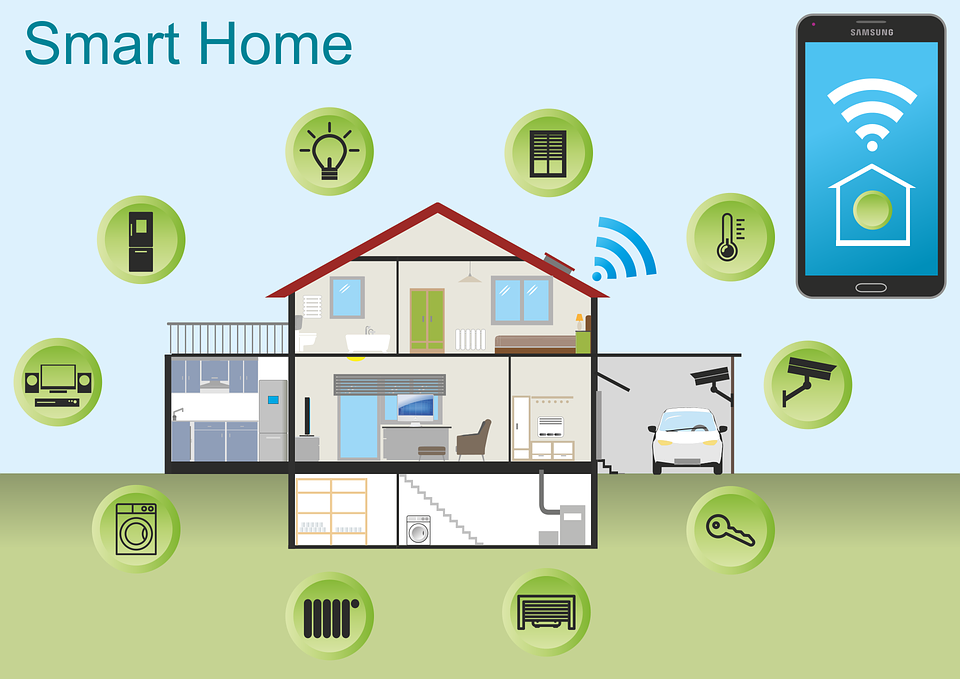You’re at the supermarket and can’t remember if you need milk; no problem, just check what’s in the fridge via your smartphone. In fact, you could tell the fridge to automatically add milk and other items to the shopping list, have it sent automatically to the supermarket which will then deliver the goods.

Life’s too short for supermarket shopping and if the whiteware in a smart home can take care of it over your broadband connection, why not?
Smart homes in which locks, lights, whiteware, audio and video equipment, heating, cooling and ventilation systems and more are networked and controlled via your smartphone are becoming more common.
They’re convenient (obviously, being able to do everything from one place AND remotely as well is great), but can also offer savings as you know how much power, gas and water is used and can switch stuff off easily. No more worrying about having left the lights on when you head out.
Security can also be improved with smarthomes that are equipped with video doorbells and cameras that have sensors that trigger on motion and not only alert you, but provide sound and vision of what’s going on, even when you’re not at home.
Forget about lockboxes and leaving keys with the neighbour. You can open the door to AirBnB guests and your forgetful teenagers via the connected lock app on your smartphone.
Home automation is of course nothing new. We’ve had whiteware and other pieces of domestic machinery for ages. Think of them as robots that will do manual labour and tasks automatically.
Machines and devices would work by themselves in isolation though, and you’d have go to each one to set them and take the next step when they’d finished the tasks.
This is where 21st century network connectivity comes in, and it makes all the difference. https://www.youtube.com/embed/kEdMOT7h218
From TVs to connected locks, lights that you can control via your smartphone, energy usage monitoring and keeping an eye on your place remotely: smarthomes do that, and much more.
Smarthomes become an extension of your digital life and extend it beyond their boundaries.
Syncing music between your car and home? Easy, ditto telling your networked TV to record a game while you’re away so it’s ready to watch when you get home.
Thanks to virtual assistants, you can control many smarthome features with your voice as well.
It’s fun and easy to program your home to do things at certain times and when specific things happen. You come home from work, say “Hi, I’m back!” and the virtual assistant kicks off a range of actions that you’ve programmed your smarthome to do, like setting the lights, playing music, and adjusting the temperature.
Once you’ve tried it, you won’t want to go back to a ‘dumb home’.
What might bug me about smarthomes?
First things first: pick your smarthome gear from a reputable vendor who supports them with software updates if needed, and can help troubleshoot any problems.
Going online and ordering a cheap device made by a brand you’ve never heard of might be tempting, but is it secure, does it protect your privacy and will you be looked after if something goes wrong? Ask those questions before clicking Buy Now.
If you’re setting up your first smarthome, ask your vendor or company doing the work how the things in it are controlled and monitored. If the answer to that is a bunch of remotes and/or multiple apps, it kind of misses the point of a smarthome which is that it should be convenient and easy to use.
A common platform that works with a range of smarthome devices makes life easier and Google, Apple and Amazon are competing with each other with their Home, HomeKit and Alexa home automation ecosystems with different device makers coming onboard.
Apple’s HomeKit framework provides a standard for smarthome device makers to follow and a single app with a consistent look or Siri the virtual assistant to control the gear. Being Apple, it’s very easy to set up home automation equipment with HomeKit; usually, it’s a matter of powering up the device, scanning its registration number (and labelling it) with an iPhone and it’s recognised by HomeKit.
The drawback is that HomeKit needs Apple gear such as the TV, HomePod or an iPad to act as hubs so that smarthome devices can be controlled away from home, and there’s only a small list of compatible devices currently.
Google Home uses one of the IT giant’s smartspeakers plus an Android or Apple iOS app on your smartphone. While a late-comer to home automation, Google now boasts that it has over a 1,000 brands in its fold, with 10,000 supported devices to choose from. Installing devices is a bit more complicated than with HomeKit though, with vendor apps to download before Google Home can use them.
Amazon’s Alexa ecosystem has had the longest to develop and now has over 20,000 smarthome devices to choose from that can be controlled via an Android or iOS app, and the Echo range of smartspeakers, one of which has a touch screen and a camera (!), to command them. Similarly to Google Home, Alexa compatible devices are more fiddly to install than HomeKit ones, taking multiple steps to to add.
The best smarthome solutions provide endless possibilities but look ahead and make sure they’ll last for a while – and that you can add new devices to them easily.
Links:
Google Home compatible devices
https://assistant.google.com/explore/c/19/
Smarthome devices that work with Amazon Alexa
https://www.amazon.com/smart-home-devices/b?ie=UTF8&node=6563140011
Apple HomeKit accessories
https://www.apple.com/nz/shop/accessories/all-accessories/homekit